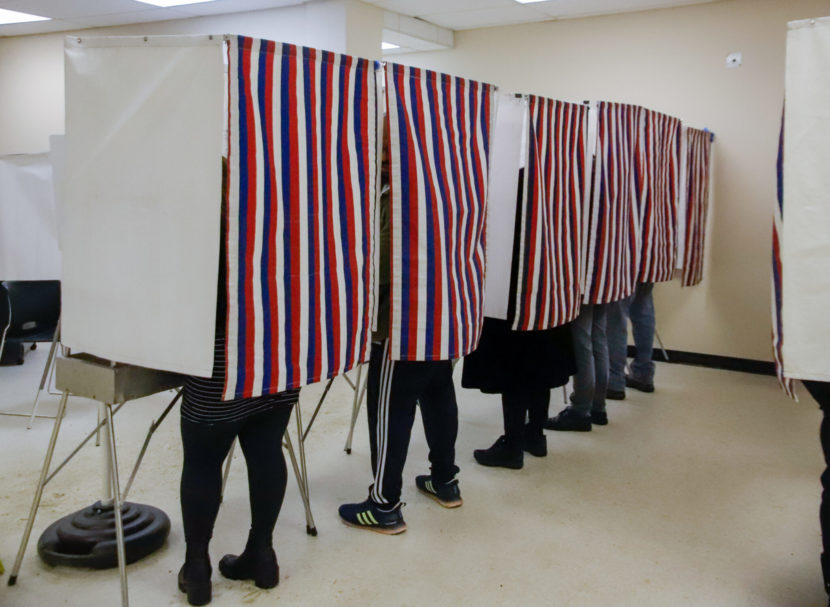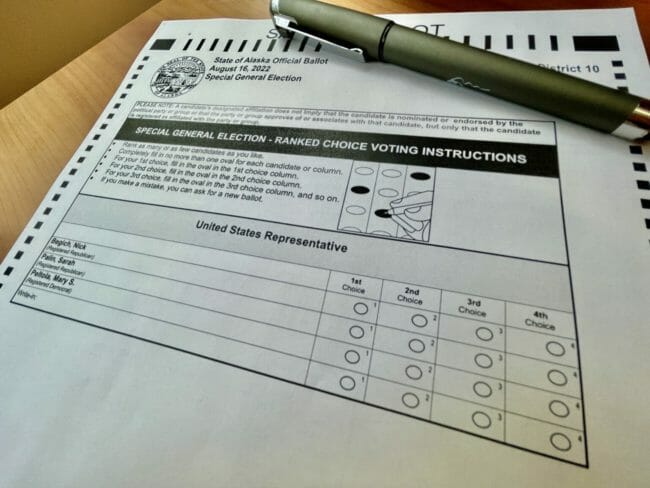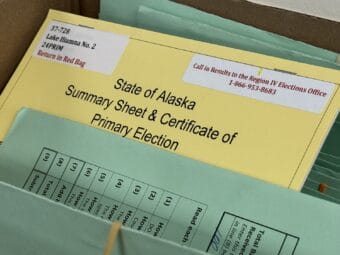
The Alaska Division of Elections has been busy counting votes since even before election day, as early, absentee and mail-in ballots arrive. By Wednesday, Nov. 23, they’ll be done counting the first choice votes on everyone’s ballot. In previous elections, that’s when the races would be called and everything would be sent off to be certified.
This year, there’s an additional step – called tabulation or sorting. That’s because under Alaska’s new election system, voters rank up to four candidates on the ballot for each race instead of just choosing one. If, after first choice votes are counted, a candidate has more than 50% of the votes, they win outright without a second round. That part hasn’t changed. Races where no candidate wins a majority of votes will go to tabulation.
During the tabulation, the fourth place finisher for each race is eliminated and the second choice candidates from those ballots get added to the results from the first choice vote count. This keeps happening in rounds until there are only two candidates left, and the one with the most votes wins.
We’ve done this once before. In August, the Division of Elections did the tabulation live on Facebook for the special election to replace Rep. Don Young. That was with a cell phone camera held up to a computer screen — a couple of mouse clicks, and it was over.
This time around will be more of a production. The process will be live on KTOO 360TV and streaming on multiple websites. Division of Elections staff will go down the ballot, race by race, reallocating second choice votes until each one has an unofficial winner. Some races might require reallocation of third choice votes, too.
The U.S. Senate and House races will be first, then the governor (if necessary – he’s on track to get more than 50% of the votes after first choices are counted) and then the state legislative races that don’t have a winner yet, which is the case for roughly a quarter of them.

Ranked choice voting is also known as instant runoff voting. In some states, there’s a second round of voting when there’s not a majority vote winner in a two-candidate race. For instance, in Georgia, voters will go to the polls again this year in December to determine the outcome of the senate race between Sen. Raphael Warnock and Herschel Walker, among others. Under Alaska’s new voting laws, we’ve already voted in that second round by ranking our choices on one ballot.
The live coverage of the ranked choice vote count will begin at 4:00 p.m. on Wednesday, Nov. 23. At 6:00 p.m. Alaska Public Media will offer an hour-long Alaska News Nightly special with election results and analysis.
After the tabulation, election results will be unofficial until they are certified. The Division of Elections’ target date for that is Nov. 29.
This story is part of KTOO’s participation in the America Amplified initiative to use community engagement to inform and strengthen our journalism. America Amplified is a public media initiative funded by the Corporation for Public Broadcasting.



